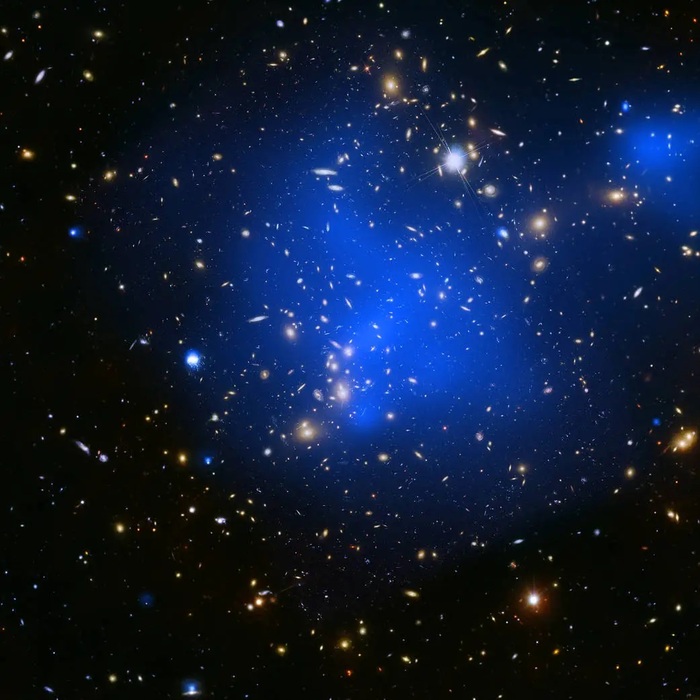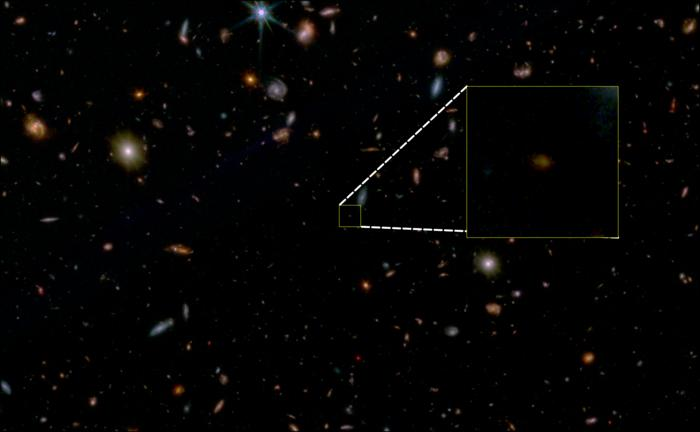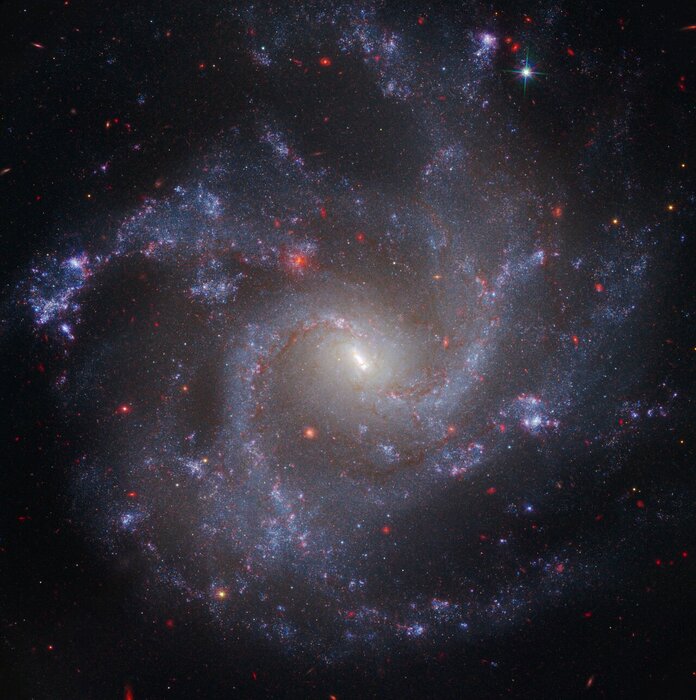Icon: enlarge
Artist's impression of the galaxy ID2299: Star formation at the end
Photo: M. Kornmesser / ESO / dpa
How does the formation of new stars in large, massive galaxies end?
An international team of astronomers has now found a surprising answer to this question by chance: Collisions of galaxies trigger huge gas flows that rob the galaxies of the material for star formation.
As researchers working with Annagrazia Puglisi from Durham University in Great Britain report in the journal Nature Astronomy, they were the first to observe such a gigantic gas emission in a distant galaxy.
With the telescope network Alma (Atacama Large Millimeter / Submillimeter Array) on a 5000 meter high plateau in the northern Chilean Atacama Desert, they captured indications of cold gas in hundreds of distant galaxies and spotted a galaxy with a highly unusual gas flow.
Gas with a mass of 10,000 suns
This galaxy, named ID2299, is so far away that it takes about nine billion years for its light to reach Earth.
The Alma measurements show that ID2299 emits gas per year that corresponds to the mass of 10,000 suns.
Overall, ID2299 loses 46 percent of its amount of cold gas through this gigantic gas flow, according to the researchers.
Many new stars are still forming in the distant galaxy, but according to Puglisi and her colleagues, the loss of gas will bring this process to a standstill in less than a hundred million years.
As further analyzes of the Alma observations show, the gigantic gas ejection is the result of a collision between two galaxies, the merging of which resulted in ID2299.
Icon: enlarge
Gas distribution in the galaxy ID2299: Nine billion light years from Earth
Photo: Jeremy Fensch / dpa
Based on statistical considerations, the team draws the conclusion that galaxy collisions and the resulting gas flows are a main cause of the sudden extinction of star formation in large galaxies - and not, as previously assumed, winds driven by stars and black holes.
Inconsistencies in previous theory
Experts had already noticed before that the formation of new stars in large galaxies often ends abruptly.
"It is still unclear which physical processes are responsible for this sudden end to star formation," write Puglisi and her colleagues.
Most female astronomers have so far favored gas flows - known as winds - as an explanation, which are driven by the radiation of newly emerging stars and by supermassive black holes in the centers of the galaxies.
These winds, so the thought, wrest the galaxies the gas from which new stars could arise.
However, both observations and computer simulations show that star formation and winds can coexist for billions of years.
So it remained unclear why star formation finally comes to an abrupt halt.
The researchers' observation now provides an explanation.
Icon: The mirror
jme / dpa









